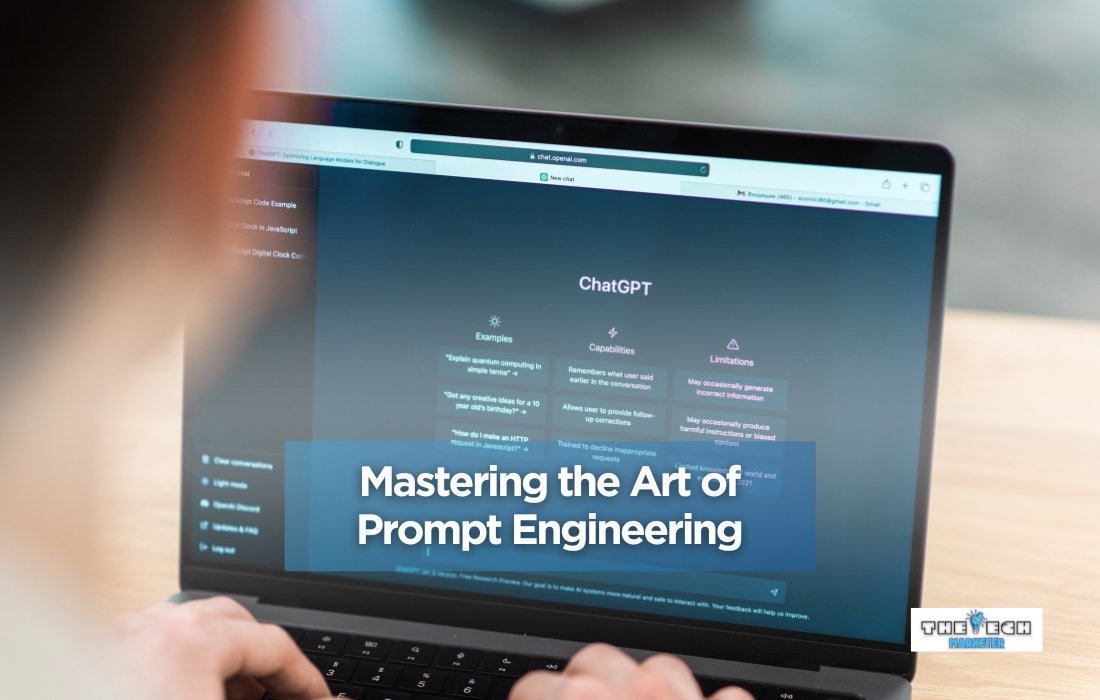Beyond Commands. How to Craft Effective Prompts for AI – The tech marketer
Prompt engineering is an art and science within the realm of artificial intelligence (AI) that focuses on crafting inputs, known as prompts, to generate desired outputs from language models like GPT-3, GPT-4, and others. This discipline is crucial for leveraging the full potential of AI models, ensuring that interactions are effective, efficient, and aligned with user intentions. In this blog post, we’ll delve into the intricacies of prompt engineering, explore its significance, and provide insights into best practices, challenges, and future directions.
The Essence of Prompt Engineering
At its core, prompt engineering is about communication with an AI in a language it understands. The prompt acts as a bridge between the human mind and the machine’s capabilities, guiding the AI to produce outputs that align with the user’s expectations. This is not merely about using the right keywords but also about understanding the AI’s architecture and how it processes information.

Significance in the AI Ecosystem
The significance of prompt engineering cannot be overstated. It plays a pivotal role in applications ranging from content creation, coding assistance, data analysis, and language translation to more complex tasks like problem-solving and creative generation. The quality of the prompt directly influences the quality of the AI’s response, making it a critical skill for developers, writers, researchers, and anyone looking to harness AI capabilities.

Best Practices for Effective Prompt Engineering
Crafting effective prompts requires a mix of creativity, technical understanding, and experimentation. Here are some best practices:
- Clarity and Specificity: Be clear and specific about what you want the AI to do. Ambiguity can lead to unexpected or undesired outcomes.
- Contextual Information: Providing context helps the AI understand the prompt better and generate more accurate responses.
- Iterative Refinement: Prompt engineering is an iterative process. Experiment with different formulations and refine your prompts based on the AI’s responses.
- Understanding Limitations: Recognize the limitations of the AI model you are working with and tailor your prompts accordingly.
Challenges in Prompt Engineering
Despite its potential, prompt engineering faces several challenges:
- Predictability: AI responses can sometimes be unpredictable, making it hard to consistently obtain desired outcomes.
- Bias and Sensitivity: AI models can inadvertently perpetuate biases or generate inappropriate content. Prompt engineers must be mindful of these issues and work to mitigate them.
- Complexity of Human Language: The nuances and complexities of human language can be difficult for AI to fully grasp, leading to misunderstandings or overly literal interpretations.

Future Directions
As AI technology continues to evolve, so too will the field of prompt engineering. We can expect advancements in AI understanding and processing of natural language, making it easier to communicate with machines in a more intuitive and human-like manner. Additionally, there is a growing interest in developing more sophisticated prompt engineering tools and techniques to further enhance the AI-human interaction.
Conclusion
Prompt engineering stands at the intersection of technology and creativity, offering a pathway to unlock the vast potential of artificial intelligence. By mastering the art of communicating with AI, we can push the boundaries of what these technologies can achieve. As we continue to explore this exciting field, the future of prompt engineering holds the promise of even more seamless, intuitive, and effective human-AI collaborations.




